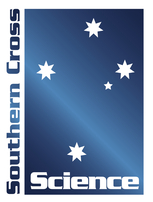Crucible
Crucible, Nickel, 99% Pure, 15mL with Lid
99% Pure Nickel. Remaining 1% is made up of trace alloys including copper.
27.3mm high x 32mm top diam.
0.4mm thick approx.
The melting point for a nickel crucible is around 700 deg C. Temperatures above this will result in the crucible oxidizing.
A Nickel crucible is suitable to melt the following: Sodium hydroxide, Sodium carbonate, Sodium hydrogen carbonate
A Nickel crucible is not suitable to melt the following: Potassium sulphate, Sodium hydrogen sulphate, Potassium bisulfate, Pyrosulfates, Borax (Sodium tetraborate decahydrate)
The following metals should not be used with/in nickel crucibles as they cause oxidation and damage: Aluminum, Zinc, Lead, Tin, Mercury
Crucible, Nickel, 99% Pure, 25mL with Lid
99% Pure Nickel. Remaining 1% is made up of trace alloys including copper.
41mm high x 36 mm top diam. x 26mm bottom diam.
The melting point for a nickel crucible is around 700 deg C. Temperatures above this will result in the crucible oxidizing.
A Nickel crucible is suitable to melt the following: Sodium hydroxide, Sodium carbonate, Sodium hydrogen carbonate
A Nickel crucible is not suitable to melt the following: Potassium sulphate, Sodium hydrogen sulphate, Potassium bisulfate, Pyrosulfates, Borax (Sodium tetraborate decahydrate)
The following metals should not be used with/in nickel crucibles as they cause oxidation and damage: Aluminum, Zinc, Lead, Tin, Mercury
Crucible, Nickel, 99% Pure, 50mL with Lid
99% Pure Nickel. Remaining 1% is made up of trace alloys including copper.
47mm high x 45mm top diameter
The melting point for a nickel crucible is around 700 deg C. Temperatures above this will result in the crucible oxidizing.
A Nickel crucible is suitable to melt the following: Sodium hydroxide, Sodium carbonate, Sodium hydrogen carbonate
A Nickel crucible is not suitable to melt the following: Potassium sulphate, Sodium hydrogen sulphate, Potassium bisulfate, Pyrosulfates, Borax (Sodium tetraborate decahydrate)
The following metals should not be used with/in nickel crucibles as they cause oxidation and damage: Aluminum, Zinc, Lead, Tin, Mercury
Crucible, Nickel, 99% Pure, 70mL with Lid
99% Pure Nickel. Remaining 1% is made up of trace alloys including copper.
47mm high x 45mm top diameter
The melting point for a nickel crucible is around 700 deg C. Temperatures above this will result in the crucible oxidizing.
A Nickel crucible is suitable to melt the following: Sodium hydroxide, Sodium carbonate, Sodium hydrogen carbonate
A Nickel crucible is not suitable to melt the following: Potassium sulphate, Sodium hydrogen sulphate, Potassium bisulfate, Pyrosulfates, Borax (Sodium tetraborate decahydrate)
The following metals should not be used with/in nickel crucibles as they cause oxidation and damage: Aluminum, Zinc, Lead, Tin, Mercury













